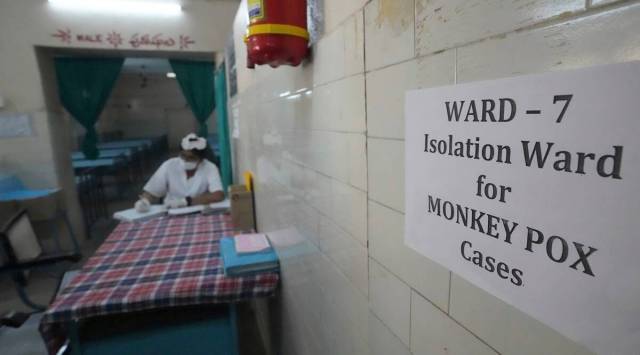Language barrier, resistance from patients: Task cut out for officials tracking contacts of monkeypox cases in Delhi
According to officials from the state health department, of the six patients, four did not cooperate and the language barrier created a major problem.
 As part of its preparedness to deal with monkeypox, the Delhi government has reserved beds or rooms in three government hospitals. (File Photo/Representational)
As part of its preparedness to deal with monkeypox, the Delhi government has reserved beds or rooms in three government hospitals. (File Photo/Representational)Contact tracing and surveillance of monkeypox patients in Delhi has proved to be a challenging task for chief district medical officers and doctors, who have cited issues such as a language barrier and resistance from patients.
A total of six cases of the viral disease have been reported so far in the city, of which five patients were of African origin. While the five have been discharged from Lok Nayak Hospital – the nodal hospital for the disease – the latest patient, a 21-year-old woman, was admitted to the hospital last Friday and her test report came positive for the disease on Saturday.
According to officials from the state health department, of the six patients, four did not cooperate and the language barrier created a major problem. “There was a communication problem with them, they were not well versed in English or Hindi. During their treatment, the patients were also reluctant to give samples, may be out of fear,” said Dr Vineet Relhan, Professor and nodal officer for monkeypox at Lok Nayak hospital.
On the condition of anonymity, a chief district medical officer (CDMO) said patients do not respond to calls as well out of hesitancy, stigma and fear attached to the disease. “They were unable to disclose their complete address and only mentioned the name of the area such as Dwarka Mor or Punjabi Bagh… We cannot trace their contacts based on such vague addresses,” he said.
According to a CDMO, one of the patients, a woman, had come from Nigeria 38 days before being admitted to the hospital for the disease. “We could not trace her immediate contacts in Delhi as she was unable to speak the language and did not provide her details correctly,” the official stated.
As part of its monkeypox prep, the Delhi govt reserved beds or rooms in 3 government and 3 private hospitals for suspected and confirmed cases. There are 35 rooms for confirmed cases and 35 for suspected cases across these hospitals.
The process
According to the official, details of patients admitted in the hospital are first provided to the state surveillance officer which, in turn, comes to the CDMOs. To carry out surveillance and contact tracing of people connected to the patient, CDMOs form district surveillance units for contact tracing and follow ups. The units also include Asha workers and Auxiliary Nurse Midwives (ANM).
“We also contact property dealers, landlords, pradhans of the villages in the areas mentioned by the patients,” the official added.
Units from the National Centre for Disease Control and Interstate surveillance team also have also been involved, said an official. He added that ADMs, DMs, SHOs have also been involved to trace the patients.
As part of its preparedness to deal with monkeypox, the Delhi government has reserved beds or rooms in three government hospitals — Lok Nayak, Guru Teg Bahadur and Dr Baba Saheb Ambedkar — and three private hospitals — Kailash Deepak Hospital, M D City Hospital, Batra Hospital and Research Centre — for suspected and confirmed cases.
There are a total of 35 rooms reserved for confirmed cases and another 35 reserved for suspected cases across these hospitals.







